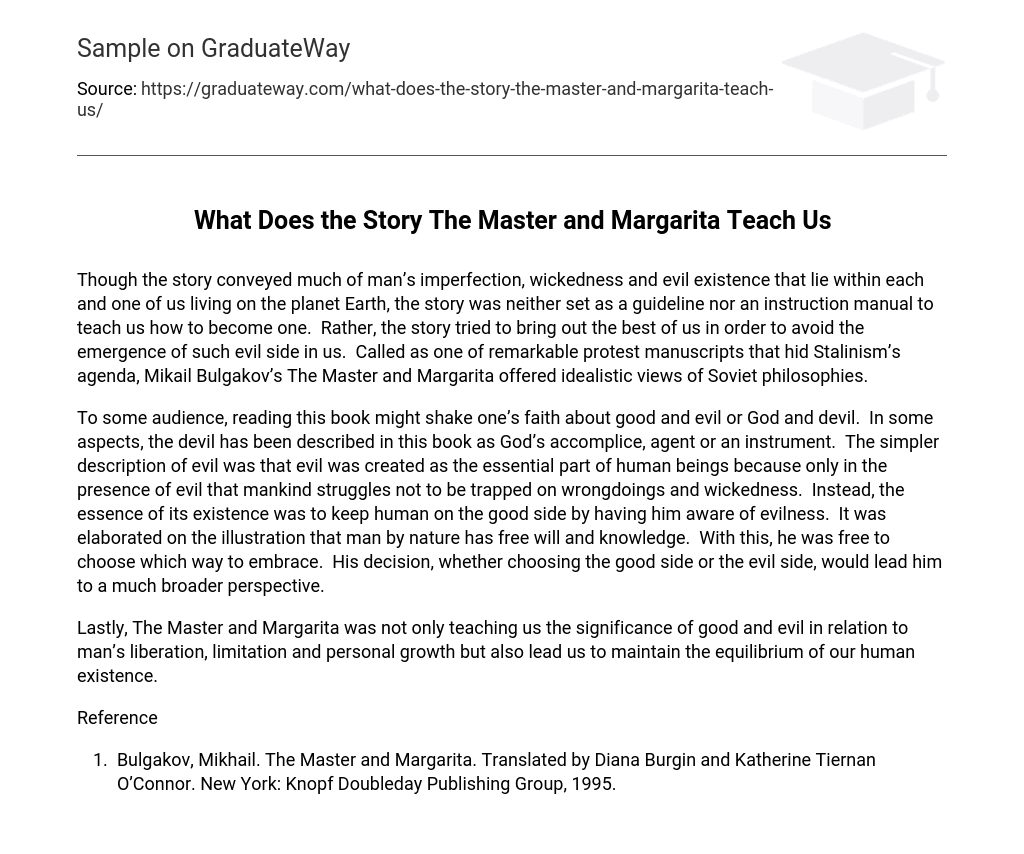Though the story conveyed much of man’s imperfection, wickedness and evil existence that lie within each and one of us living on the planet Earth, the story was neither set as a guideline nor an instruction manual to teach us how to become one. Rather, the story tried to bring out the best of us in order to avoid the emergence of such evil side in us. Called as one of remarkable protest manuscripts that hid Stalinism’s agenda, Mikail Bulgakov’s The Master and Margarita offered idealistic views of Soviet philosophies.
To some audience, reading this book might shake one’s faith about good and evil or God and devil. In some aspects, the devil has been described in this book as God’s accomplice, agent or an instrument. The simpler description of evil was that evil was created as the essential part of human beings because only in the presence of evil that mankind struggles not to be trapped on wrongdoings and wickedness. Instead, the essence of its existence was to keep human on the good side by having him aware of evilness. It was elaborated on the illustration that man by nature has free will and knowledge. With this, he was free to choose which way to embrace. His decision, whether choosing the good side or the evil side, would lead him to a much broader perspective.
Lastly, The Master and Margarita was not only teaching us the significance of good and evil in relation to man’s liberation, limitation and personal growth but also lead us to maintain the equilibrium of our human existence.
Reference
- Bulgakov, Mikhail. The Master and Margarita. Translated by Diana Burgin and Katherine Tiernan O’Connor. New York: Knopf Doubleday Publishing Group, 1995.





